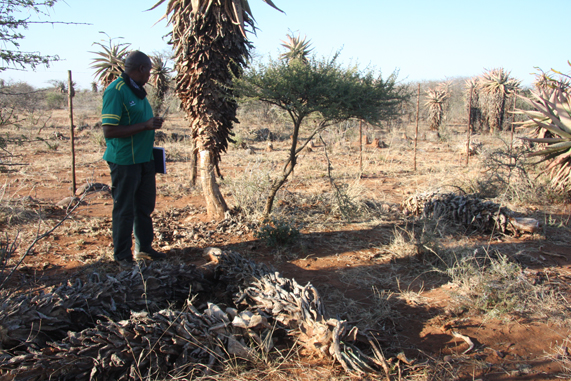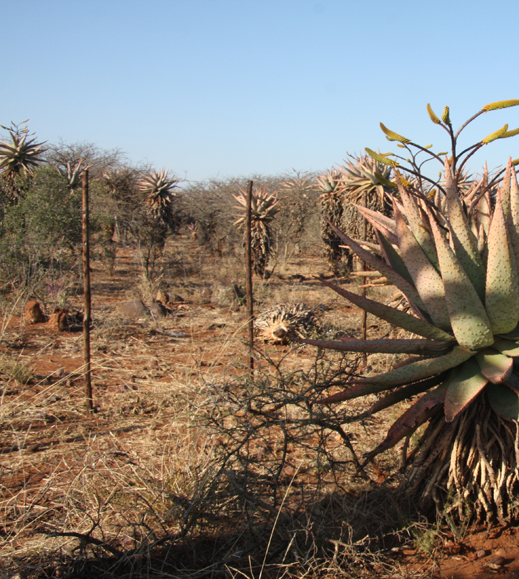Moshana awaits ecological park completion
10 Aug 2020
Livelihoods will soon improve in the sleepy village of Moshana in the Southern District should a multifaceted facility dubbed Moshana Ecological Educational Park finish as scheduled.
According to some villagers, the park will raise children to be builders instead of beggars.
The park that sit on 18 hectares’ was funded by Botswana Telecommunications Corporation (BTC) Foundation at the tune of P615 000 and is being developed through Moshana Community Development Trust.
When fully operational, it would empower people by developing skills and supporting projects that would create opportunities, employment and build community spirit as well as building rapport with stakeholders.
The park would preserve the gifts of nature such as flora and fauna thus supplementing government efforts to eradicate poverty and bring about rural transformation to improve the quality and standard of life of residents and other citizens.
Moshana Community Development Trust’s secretary, Mr Bareng Baikgantshi, said in an interview that they registered the trust in 2016 to conserve and protect natural resources in the area as well as to sustainably utilise natural resources for equitable benefit and development of the community.
He said they also aimed at identifying, marking, conserving and protecting areas as well as to optimally benefit from such sites and provide a support platform for growth of small businesses particularly arts and other intellectual property works.
Mr Baikgantshi said the major focus of the park, among others, was to construct a knowledge based site that would be used for environmental education and conservation of the village’s native biodiversity.
Therefore, he said given that Moshana was home to several species of wildlife including birds, the trust decided to make the project a priority since there was no active environmental education park in the Southern District, therefore the Moshana one would benefit people beyond the village’s boundaries.
He said the project offered an opportunity for the Moshana community to play an active role in the protection of vegetation species found in the vicinity of the village and would also introduce species that could be of economic value to the community.
The park boosts preservation of aloe-vera tree used for medicinal purposes both for livestock and human beings. It is used when it is dried up and grinding it into powder as well as using it when it is green or fresh.
Research shows that the tree can be used for various purposes such as a tooth paste, mouth wash, facial wash material, body ointment and a beautifying substance known as vanishing cream.
However, Mr Baikgantshi said intensive research is underway to see how best they can benefit from Aloe-vera plant as they believe a lot of products can be derived from it.
The multifaceted facility once fully operational would undertake a beekeeping project in which there is a symbiotic relationship between the bees and Aloe-vera plant as the former tap into the plant jelly to manufacture honey.
He said the plant is also used for animal feed or as forage thus its preservation is of paramount importance.
Once fully operational the facility will also engage in aquaculture as they would be nurturing crocodiles and other water related species in the area.
The trust has secured a borehole in Moshana which they would use as a water source where and when the need arises in the park.
The multifaceted park, would also comprise of tree nursery, conference and information centres.
Mr Baikgantshi shared that the facility would lure tourists into the area as well as bring other forms of development such as the hospitality industry, among others.
However, part of the park comprises a site where asbestos was mined that was used as a building and roofing material pointing that would provide historical education for upcoming generations.
He said Moshana is blessed with African wormwood (lengana) and therefore intend to plant the herb in the park, the herb widely used by people of African descent for healing purposes.
Research shows that it is used by Bapedi traditional healers to treat asthma and related symptoms in the Limpopo Province of South Africa.
In Botswana most people use it for tea but is said it can also cure cough. The trust is currently working with the Department of National Museum and Monuments and Botswana Society as research partners in developing one of the Bangwaketse historical sites called Makolontwane into a tourist attraction area.
Mr Baikgantshi said works would include locating and mapping all the wall stones in the area, development of the heritage management site, excavation of all artefacts and documentation, adding the project is funded by Botswana National Environment Fund at the tune of over P800 000.
Preparations kick-started in 2017 to develop the large stonewall capital of Makolontwane as a cultural heritage tourism destination. Makolontwane was built by Bangwaketse in the eighteenth century as part of their raiding state. Efforts to preserve and restore Makolontwane are grounded in a desire to make such history accessible to all visitors, including Tswana speakers who have been routinely alienated from their own archaeological heritage. ends
Source : BOPA
Author : keith keti
Location : MOSHANA
Event : Interview
Date : 10 Aug 2020







